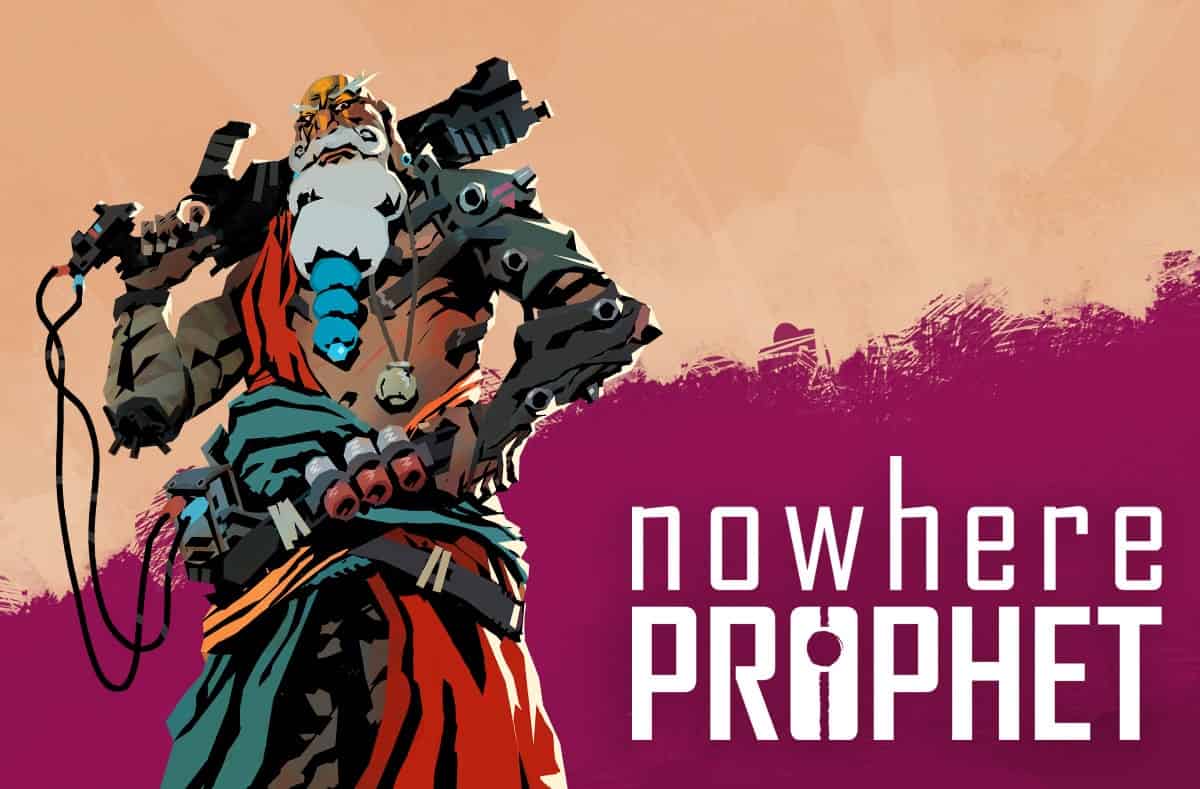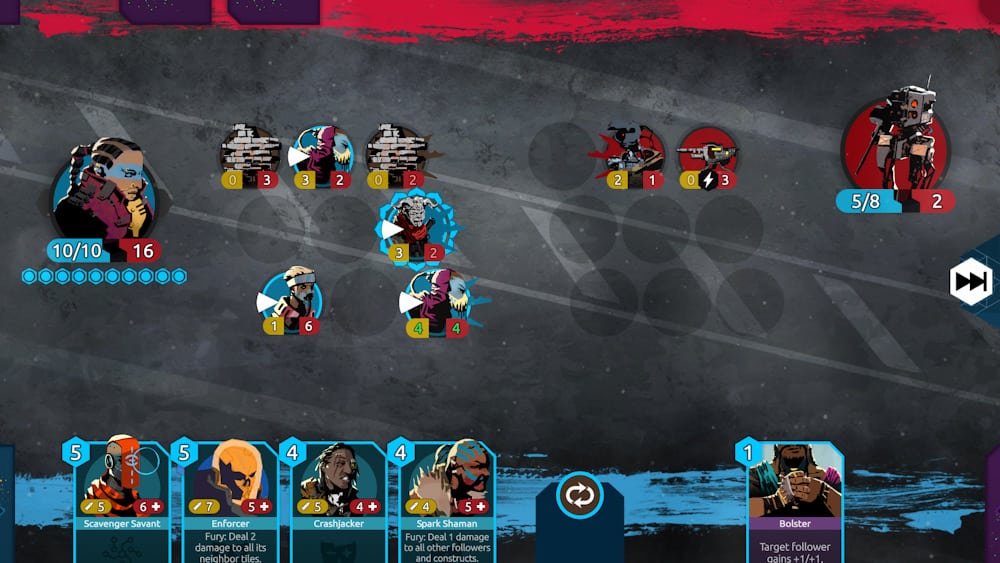Nowhere Prophet review: A strong card game hampered by minimal storytelling
6 min. read
Updated on
Read our disclosure page to find out how can you help MSPoweruser sustain the editorial team Read more

In Sharkbomb Studios’ Nowhere Prophet, you’re the nameless leader tasked with escorting a ragged group of survivors through a post-apocalyptic world ravaged by the cataclysmic event known as the Crash. Within this ramshackled world, you’ll need to help your followers traverse and survive the harsh, devestated world of Soma with one goal in mind: finding the safe haven colloquially referred to as The Crypt.
This is the basic plotline, but Nowhere Prophet is a game designed for replayability. It’s gameplay offering of roguelike deck building pairs with an expanding narrative that’s bolstered through exploring the many branching paths of its procedurally generated world. Exploring will often lead you to randomised encounters. You’ll discover abandoned structures, enigmatic locals and rival settlements where you can interact with passer-bys and a variety of religious groups in the form of a mini text adventure.
It’s an interesting combination for your first few routes, through an intriguingly constructed world. Disappointingly, as you move from point to point on the game’s map, the encounters you stumble into on your journey feel constantly recycled as you spend more time experiencing extremely similar events. Repetition is worsened by the fact that most encounters tend to result in familiar combat scenarios with various bandits, gangs, hostile machinery, and wild beasts; new licks on paint on the same structure.
With a far from revolutionary and memorable narrative tying each map node together, the combat in Nowhere Prophet is forced to become the primary driving force Nowhere Prophet’s experience – for better or worse. In layman’s terms, you’re playing a card game; you’ll start off with a standard deck of cards that’ll expand as you journey throughout the world and recruit new followers to your cause.

During encounters, you are able to draw from two decks of cards: one represents your leader and the other represents the followers within your convoy. The leader’s deck consists of a smaller number of cards but features abilities that deal direct leader and follower damage to your enemies or provide boosts to your followers. On the other hand, the follower’s deck includes a wide range of attackers that you can place on the gridded battlefield, an essential tactic to keeping yourself alive.
Combat requires carefulky balancing the use of both decks around a limited pool of energy in an attempt to reduce an opposing leader’s health to 0 – highly reminiscent of the roguelike title Slay the Spire and collectable card game Hearthstone. To win each battle, you need to play strategically, deploying your devout followers to the battlefield in order to strike down your foes – but your opponent can also do the same.
To add another level of strategic planning, the first followers in each row can attack the first unit in the opposing rows – any follower positioned behind the first unit is safe from being targeted (unless they have one of the followers’ special abilities). You can also decide to target the opposing leader directly, forgetting about the battlefield units, and going in for the kill. But being so rash will open yourself up to attack, potentially risking the outcome of the battle.
As mentioned above, some followers, friendly and hostile, house specific unique abilities that they can bring to the battle. Some followers can Taunt, forcing enemies to only attack that card until it is defeated. Some will activate Fury, which activates when played or destroyed, which dismantles the first row of defense entirely. Other followers may be able to Charge, an ability that allows a card to immediately attack once summoned.

Much like Hearthstone, encounters initiate with only three energy points to use meaning you can only play a combination of cards that uses three units of energy or less – each card states how much energy it requires. After each round, your energy is regenerated and increased by one – requiring you to carefully prepare your deck beforehand and play your cards right, don’t only include your highest energy cards.
If you wanted to add yet another layer of challenge, Nowhere Prophet’s roguelike roots means that each combat scenario sees you battling against the permadeath system on both yourself and your followers. When your health, leader’s health, reaches zero, the game automatically ends you’re sent back to the beginning. When one of the followers is defeated, they become wounded but when they are defeated a second time whilst wounded, they die permanently and you lose that card for the remainder of your playthrough. It’s a fine mechanic – many games balance it perfectly, but this is where unfortunate balancing issues come to fruition.
Nowhere Prophet feels more tied to luck and chance than other roguelikes, an aspect that feels less engaging than a strategic yet challenging duel using the game’s most intriguing systems. While most combat encounters feature fairly straightforward battles with enemies who have lower health and a standard set of cards, one random encounter will see the opposition unleash an overpowered combination of cards which puts you on the backfoot, forcing you into an uphill climb for the entirety of the fight.
Normally, I would brush aside the loss, start again and make sure I was more prepared the next time, but with a loss meaning starting the game all over again due to unfair balancing, it grew frustrating despite the fairly entertaining nature of the gameplay mechanics.
In addition to the main campaign, the game also offers Daily Challenge and Custom Game modes, always having more content hidden up its sleeves that’ll be awesome for those looking for a daily check-in with their Game Pass subscription. Prophet‘s Custom Game mode is offered as a substitute easy mode (after dying three times in the main campaign), allowing the player to activate four modifiers – such as increasing the number of resources you have or preventing followers from getting wounded – in an attempt to lessen the blow of the brutality found in the campaign.
After reading this review, you may conclude that I disliked Nowhere Prophet, but that is far from the truth. While this style of gameplay may not be for everyone, Nowhere Prophet offers a somewhat enjoyable, challenging, and diverse roguelike card game with a beautiful art style and magnificent soundtrack, but unmemorable storytelling, poor balancing, and a confusingly weak tutorial dampened the unique experience presented on-screen.
Nowhere Prophet is now available on Steam, PlayStation 4, Nintendo Switch, itch.Io, Xbox One. It’s also available in Xbox Game Pass.








User forum
0 messages